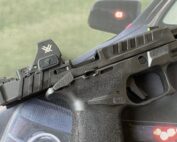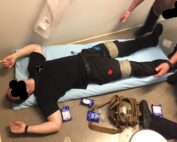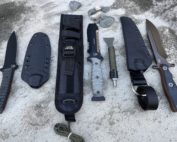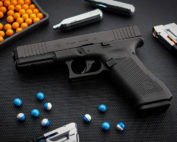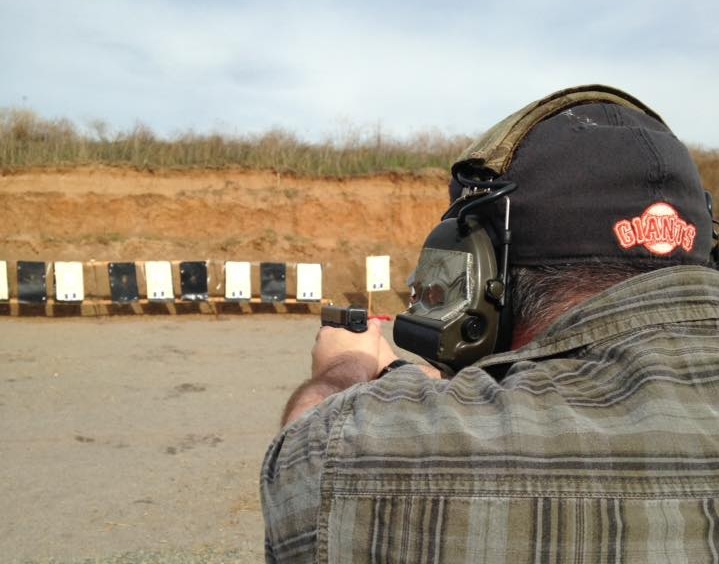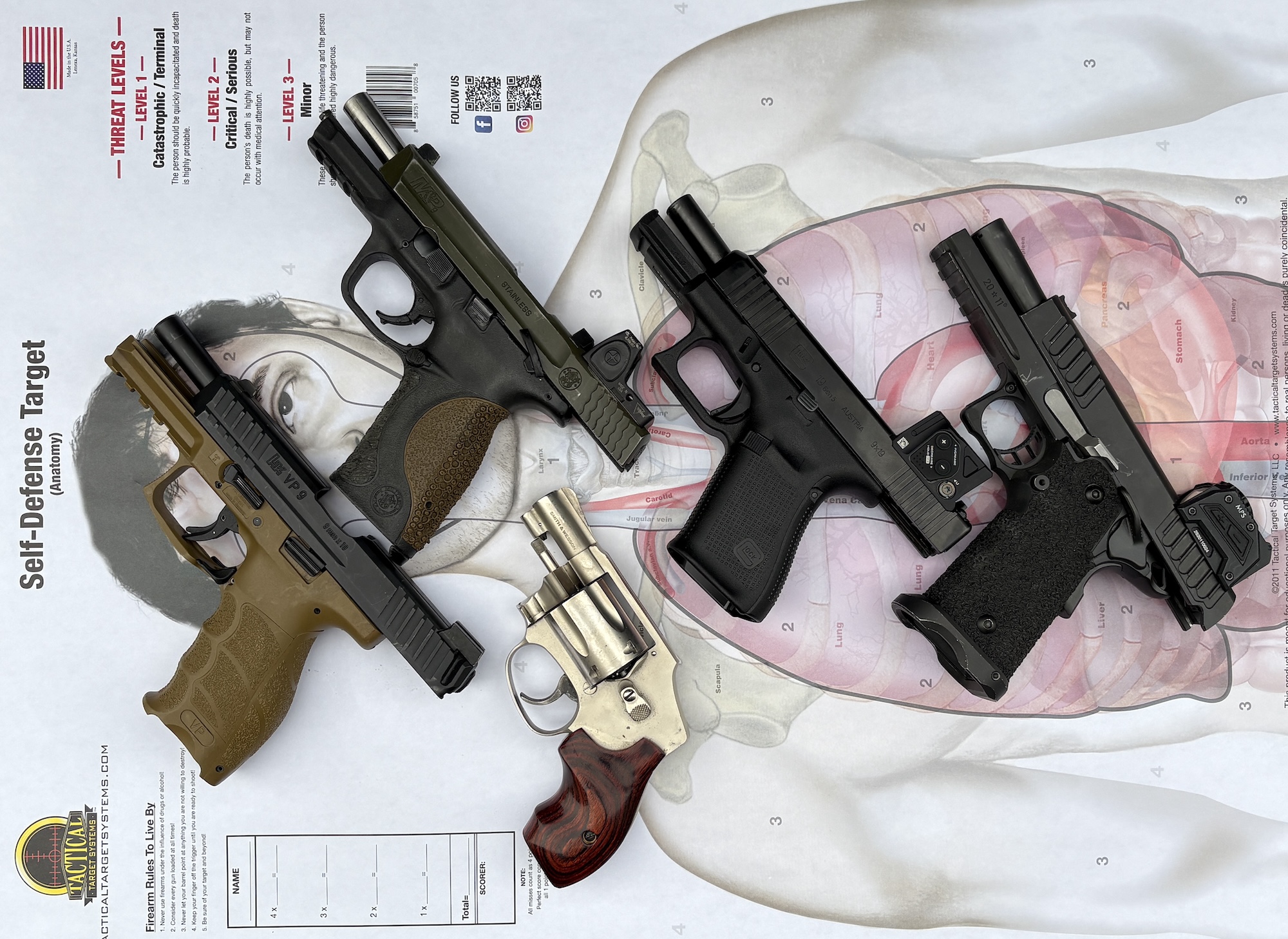
computers_big
Shaken, Not Stirred.
Let’s face it, you can put a 200-pound forged solid steel anvil on the table of just about any law enforcement patrol squad conference room with three cops in the room, the anvil will be broken beyond repair in about 20 minutes. As far as understatements go, to say cops are hard on equipment rates up there with saying the Grand Canyon is just another hole in the ground.
Yes, cops are indeed hard on equipment, but it’s not all their fault. The rigors of police work in general taxes an item’s durability. Patrol work in the rain, heat and snow, taking a ne’er-do-well into custody, pursuits and contact with bodily fluids just scratches the surface of the problem. So when it comes to sensitive electronic equipment that’ll keep you safe, informed, productive and robust solutions are needed.
Ruggedized Computers
We need computers for practically every task in today’s police work. Whether it’s running a plate for stolen, checking for warrants or analyzing crime data on your beat, we need computers and they need to be durable.
Rugged laptops are designed for the most demanding conditions: they have a mil-std-810F compliance designation and have undergone and passed a test of the signal emissions given off by the machine called TEMPEST. Cases are normally constructed using magnesium alloy.
Most of the truly rugged models complying with the mil-std-810F and TEMPEST are available only to the military. Consumer-grade tough laptops are designated as semi-rugged notebooks. Most lack the military-grade certifications, but have the rugged qualities necessary for law enforcement.
Testing
Panasonic suggested some testing that should be done if your agency is contemplating outfitting your officers. It would be a good idea to inform whatever supplier of your intentions. Making it known can also weed out vendors that don’t want to prove their systems will stand up.
Panasonic’s lightweight and fully rugged design makes this a
go-anywhere system for law enforcement. Third-party manufacturers
are already supplying mounting docks for all standard police vehicles.
Vibration Resistance
Place the unit (turned off) in the back of a pickup truck and drive it on a bumpy road. Once done, turn it back on. In-use vibration testing would consist of placing the device on the floorboard of a car or truck, open and operating while driving down a bumpy road. This test simulates the vibrations typically experienced in a vehicle-mounted environment.
Shock
It’s similar to drop, but reflects an object striking the device or the device striking an object, versus falling to the ground. Hold the unit by its side (operational or non-operational) and walk into a room, “accidentally” causing an impact with a doorjamb. This simulates the types of potential shocks that can occur when transporting the device around an industrial environment or into a victim’s home, garage or yard to take a report.
Water Resistance
Make sure the ports are sealed and the device is powered on, pour or spray water or liquids (mocha-frappa-salted-caramel latte for some) on the unit for a real-world, in-the-car test. A sink sprayer or garden hose should work fine too. Do not dunk the device — water resistance, not submersion, is the test. You cops aren’t Navy SEALs and don’t need to use the device for underwater infiltrations. This test simulates using the device in inclement weather or on a job site around water.
The Z710 from Getac uses the Android operating system. It’s
fully rugged and mountable. New LE apps are being created
everyday to make your job easier.
Dust Resistance
Again, with ports sealed and device powered on, pour or blow dust and/or dirt on the device. This test simulates usage situations like desert sandstorms or environments where unsealed devices can have internal components exposed to contaminants.
Choices
Fortunately, there are some great choices out there for law enforcement-level ruggedized computers. Recently, I was able to get my hands on a few choices and play with them a bit. No, I didn’t perform destructive testing — they would have never sent them if I said I was going to do that — but I was able to link them with available Wi-Fi, use the keyboards, touchscreens, operating systems and generally get a feel for the systems.
Here are a few notable systems, which could easily sit next to you in the cruiser and make your work environment easier.
Panasonic Toughpad FZ-G1
Size and ease of use are the most notable features of the just introduced Toughpad FZ-G1. The 10.1″ display is really bright and easily read in full daylight. The operating system is Genuine Windows 8 Pro 64-bit — and I hate it. I was comfortable with a DOS prompt, but time marches on and new operating systems are more efficient. The FZ-G1’s OS can be downgraded (Panasonic’s term, not mine) to Windows 7. The processor is Intel’s third-generation Intel Core i5vPro and the speed is astounding.
Expansion ports include the newest USB 3.0, HDMI ports, optional dedicated GPS port, Serial, Ethernet, MicroSD or a second USB port. This tablet is Wi-Fi and Bluetooth equipped; 4G LTE or 3G Gobi are optional.
Panasonic is used by hundreds of agencies and many third-party accessories are available from keyboards to in-car printers. Gambler-Johnson just introduced a new Panasonic-approved in-car docking system for the Toughpad FZ-G1 that can be single-keyed for one user or multi-keyed if the unit is shared.
The Getac V200 is built like a tank. It’ll hold up to the daily
rigors of police work. It has a built-in camera on the screen
frame and a fingerprint reader for security.
Getac
Getac sent along two units for inspection. One is a full-size notebook that converts to a tablet simply by rotating the screen and using as a touch screen or with a supplied and tethered blunt pen. The other is a true tablet running on the Android OS.
V200
It’s a beast — not in the giant, lumbering oaf sense — but in the you could beat people to death with the device while checking your email sense, although your sergeant might frown upon that. The V200 is a convertible system. It has a 12.1″ display that can be swiveled around to change it from a standard notebook to a touch screen tablet.
It comes equipped with the latest dual-core Intel Core i5 or Intel Core i7 processor, Intel vPro IT remote management and IP65/mil-std-810G certifications. The new Intel HD Graphics 4000 is ideal for mapping and video applications. It’s integrated on a single chip and incorporates advanced 3D processing.
The V200’s keyboard is standard in size for a notebook. Its red backlighting lets you type in the dimmest conditions without silhouetting yourself. Additionally, the red glow reduces eyestrain compared to other backlights.
The system is fanless and the case is sealed. That’s accomplished using a sophisticated copper pipe cooling system, which dissipates the heat without the need for internal fans. This fanless design allows the V200 to employ a sealed design, protecting it against dust and water.
Z710 Fully Rugged Tablet
The Getac Z710 is a fully rugged tablet. It’s an Android 4.1 OS tablet that has a 7″ display, fits in your hand and allows for flexibility to work in nearly any environment. The Z710 is the first rugged Android tablet to be certified to a mil-std-810G 6′ drop rating. It also has dust and water protection complying with the IP65 standard. The device comes with Wi-Fi, Bluetooth and 3G connectivity. It took me about 1 minute to get set up on my home Wi-Fi system.
GPS is another feature of the Z710. Its Lattice SiRFstarIV chipset provides twice the search capacity of earlier chips for faster location and improved accuracy down to 2.5 meters. Combined with an E-compass and 3-axis accelerometer, this feature boosts the device’s effectiveness in tactical operations when it’s essential you know and can communicate your location. The Z710 also has front and rear camera as well as an RFID reader.
Both the V200 and the Z710 use Getac-developed, ultra-sensitive multi-touch technology to make the screen respond to touch, press, drag and even input from a gloved hand on those cold nights or in tactical situations.
The GammaTech U12C switches between full-size notebook and
tablet computer by simply rotating the screen and folding it
into place. The built-in handle is convenient and sturdy.
GammaTech U12C
GammaTech makes the Durabook. The U12C fits into the law enforcement world easily because of its durability, combined with its ultra light weight. The U12C features a 12.1″ WXGA 1280×800 touch screen TFT LED backlight display. The device converts to a Tablet PC by rotating the screen. The U12C is encased in magnesium and, like the others, has been tested to mil-std-810G standards for drop, shock and spill protection.
Dirt and dust hazards are mitigated, as the I/O ports are covered. The unit is powered by the Intel i5 processor and runs Windows 7 (an OS I’m more comfortable with).
Security is always a concern — the U12C has a built-in fingerprint scanner in the screen’s frame to prevent unauthorized use.
The built-in handle is solid and even makes it difficult to drop or snag on something. The external I/O connectors are one e-SATA/USB 2.0 combo connector, one USB 2.0 connector, one RJ-45 jack for 10/100/1000Mbps Ethernet, a 15 pin D-sub VGA port for ext. monitor/projector, an 84 pin docking connector supporting DC, VGA, LAN and USB connectivity as well as the unit’s DC-in jack.
Others
There are plenty of other rugged computers out there like Amrel, Lenova; Dell even makes a semi-rugged system, but these are the only ones I could get my hands on for this article. If your agency is thinking about starting up with rugged systems or replacing existing units, you really need to test them. Come up with your own testing protocol encompassing real world — your world — tests. It’ll pay dividends in the long run.
For more info: www.americancop.com/product-index and click on the company name.
By Dave Douglas
View This American COP October 2013 Issue Now!


 (No Ratings Yet)
(No Ratings Yet)





